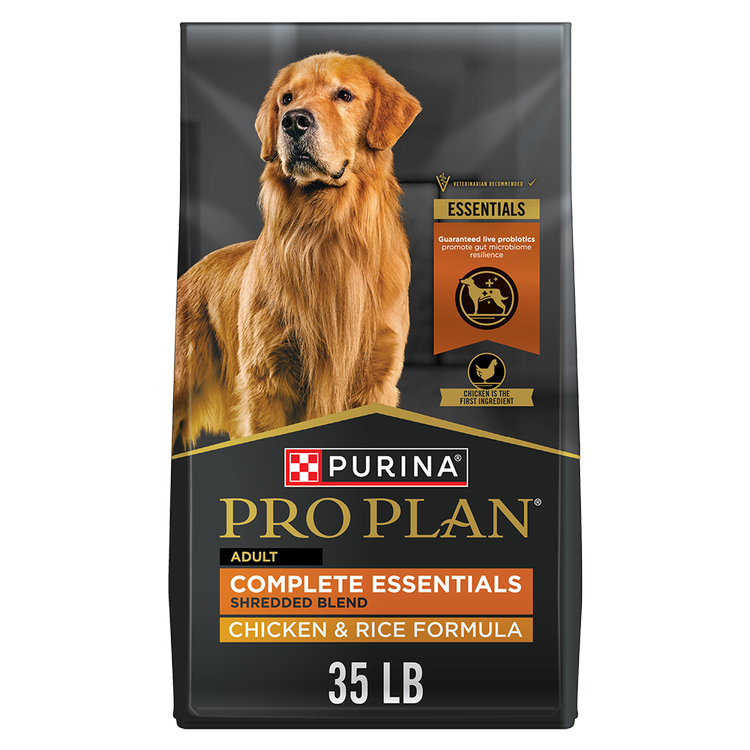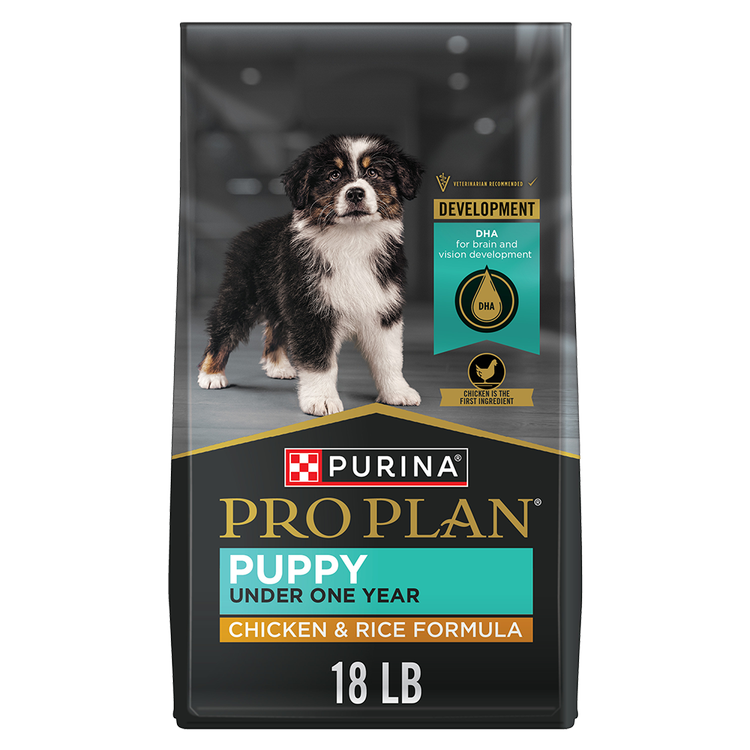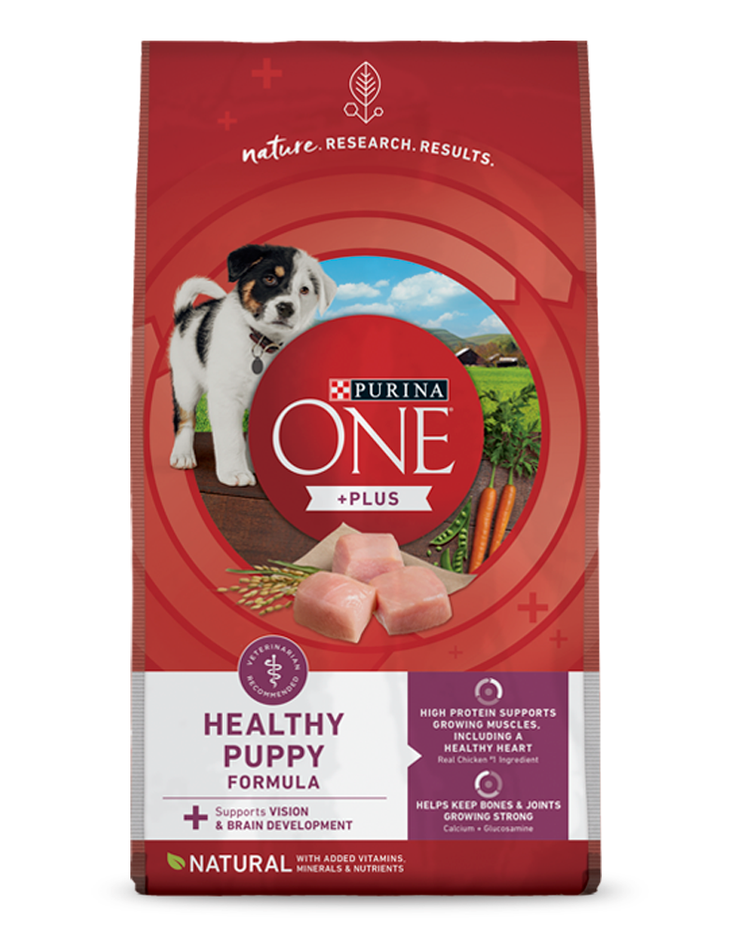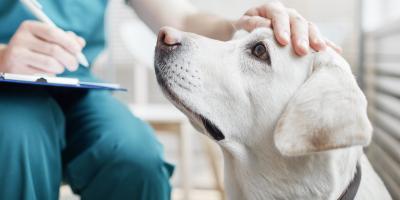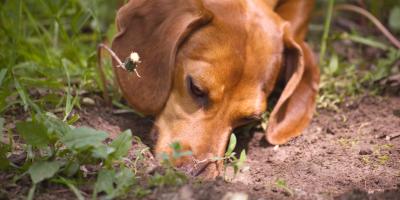Dog Labor Signs & Puppy Delivery Stages Explained


We can’t think of anything more exciting than finding out your dog is expecting! As dog pregnancy only lasts for around two months, you can look forward to bundles of fur filling your home very soon!
When your dog is pregnant, you may find yourself wondering, How do dogs give birth? You don’t have to panic as the due date approaches. Dog labors are usually much less dramatic than ours, and your pet should be able to bring the puppies into the world without any worries. The mom should be more than capable, but keep her company during labor in case your dog runs into any complications.
Speak to your vet if you have any concerns about pregnancy in dogs or about your dog giving birth. Their advice should help to put your mind at rest. Here are some helpful tips from our PetCare Team to help you be as prepared as possible for when your dog becomes a new mom.
How to Prepare Your Dog for the Birth
From learning how to build a nest to knowing what equipment to keep on standby, we’ve listed how to prepare your dog for labor listed below. Your dog’s labor should go smoothly, but it’s useful to have help on hand to keep them calm and in case your dog runs into any complications.
Knowing Your Dog’s Due Date
As we mentioned, dog pregnancies only last 2 months (or around 63 days) – it can feel like a bit of a whirlwind! As soon as you notice that your dog is pregnant, it’s important to get her checked out to see how far along she is. As it gets closer to the time, you can be prepared by doing the next steps:
Build a Nest for Dog Labor
Mom will want a private place in your home where they can relax and give birth to the puppies in peace, so build a “nest” in the last two weeks of your dog’s pregnancy.
An ideal nest for dogs giving birth is a large cardboard box lined with puppy pads (in case of accidents), and filled with clean blankets, sheets or towels. Make sure the box is big enough for both mom and the litter to fit comfortably inside, and allow Mom room for their own space if your dog wants it. You’ll also have to make sure the box is tall enough to stop any adventurous puppies escaping!
Place the nest in a quiet spot at room temperature, where they won’t be disturbed and can stay cozy. Adding your dog’s own bedding or toys to the nest (as long as they are clean) can encourage your pet to use it, and will make the soon-to-be mom feel at home before the birth.
Keep Your Vet’s After-Hours Phone Number Handy
Get a hold of your vet's after-hours phone number prior to your dog giving birth, as delivery often happens during the night. Let your vet know your dog’s due date (if they don’t know already), so they know when to be on standby. If the mom does have problems delivering the puppies, you may need to take them into the vet, so make sure that you have access to transportation.
Gather the Relevant Equipment
In case the mom does need a helping hand, have thread, nail scissors and several clean, dry towels nearby during the birth. If the litter is a large one, you may also need an extra basket to ensure you have plenty of room for the newborn puppies!
If you do move the puppies away from mom, you’ll need to help them to stay warm. We recommend using a microwaveable beanie bag instead of a hot water bottle, as puppies’ sharp teeth and claws can cause punctures.
10 Signs of Dog Labor to Look Out For
When your dog is in labor, you’ll likely notice a drop in their temperature, restlessness, panting, nesting behavior, shivering and more. There are different stages to their labor, but we have more details on this below to help you out.
1. Drop in Temperature
Your dog’s temperature is one of the early signs of labor to pay attention to. One of the first signs of impending labor in dogs is a drop in the mother’s body temperature from 101.3°F to 98.6°F – labor usually begins around 12-24 hours after that.
To know when this happens, take your dog’s temperature twice a day with a rectal thermometer throughout the final week of pregnancy. If you’re unsure how, ask your vet to show you. If you find that taking her temperature is causing your dog stress, then stop. You need to help your dog to stay as calm as possible at this time.
2. Restlessness
During the final week of dog pregnancy, mothers-to-be may be a little restless and seclude themselves in a quiet area. A loss of appetite and burrowing in her bedding is common in the 12-24 hours before she goes into labor.
3. Changes in Nesting Behavior
Very occasionally, your dog may move the nest that you made for them to another area of the house. If this happens, try not to move it from the preferred location, if possible.
4. Vomiting
Nausea and vomiting in dogs are other labor signs you might notice. Make sure your dog has plenty of water available to avoid dehydration.
5. Loss of Appetite
A lack of interest in their food might also point to an imminent labor. Here are other reasons why your dog might lose their appetite.
6. Shivering
Shivering can be a sign your dog is in pain and the labor has started. This is normal and you should do your best to comfort the pet during this time.
7. Panting
Panting is another way a dog in labor will let you know they are in pain and the contractions have started.
8. Tiredness
Pregnant dogs can be more lethargic than usual, but you will notice a drop in their energy levels close to the time they will get into labor.
9. Contractions
You will know your dog is in labor as soon as contractions begin. Look out for a hardened abdomen. You might even be able to feel the contraction by placing your hands gently on their stomach.
10. The Start of Milk Production
Some dogs will start producing milk before they give birth. If their breasts have become hardened, this is another indication that they will get into labor soon.
How Long Are Dogs in Labor?
Dog labor should take about 3-12 hours from the start of the contractions. Dogs will usually give birth to all of the litter within 6 hours and never take longer than 24 hours. See more below on this for more information.
The 3 Stages of Dog Labor and Delivery
In general, dog births are normally straightforward and don’t often involve complications. Although you should interfere as little as possible, it’s still important to be with your dog giving birth, so that you can support her and step in if there are any problems. Labor normally lasts 3-12 hours, and happens in three stages.
Stage One: Your Dog Will Start to Have Contractions
- The cervix and uterus prepare for delivery with smaller contractions that may not be visible to you.
- Your dog’s vulva will begin to swell in preparation for delivery.
- During this stage of labor, dogs may be very restless and unsettled and mom may pant and shiver – this is all perfectly normal, so don’t worry.
Stage Two: The Part of Dog Labor When the Puppies Are Delivered
The second stage is the passing of puppies which usually takes between 3-12 hours but can take up to 24 hours.
- Mom's rectal temperature will return to normal as she gets ready to deliver her puppies.
- You will see strong contractions, followed by a clear fluid from your dog’s vulva – a puppy should follow within the next 20-30 minutes.
- Puppies are usually born within 20 minutes of each other, but it’s quite normal for mom to have a rest during delivery, and may not strain at all for up to two hours between pups. Closely watch your dog giving birth and contact your vet if she rests for longer than two hours.
- It’s normal for some of the litter to be born tail-first, so don’t be alarmed if this happens. You may need to gently encourage mom to deliver puppies that are tail-first, but be very careful not to tug.
- Mom should bite through the puppy’s sacs and umbilical cords before cleaning them herself. If you notice she is trying to chew the cords too close to the puppy, stop her and do it yourself.
- If labor lasts a long time, mom may need to go to the toilet in between deliveries. Keep a close eye on her in case she starts giving birth to the next pup at the same time.
- A greenish/brown discharge may suggest a placenta has separated. If you see this, a puppy should be born within the next 2-4 hours. If it isn’t, then contact your vet, as there may be a complication with your dog giving birth.
Stage Three: Your Dog Delivers the Placentas
- The placentas should pass after each puppy has been born.
- Try to check how many placentas have been passed (note if she eats any), so you will know if any are left inside mom. If you think this has happened, contact your vet as they may need to intervene.
- During this stage of labor, dogs may be very restless and unsettled, and mom may pant and shiver – this is all perfectly normal, so don’t worry.
How Do I Help My Dog Deliver Their Puppies?
Hopefully you shouldn’t have to intervene during your dog’s labor, but occasionally mom may need a bit of help. There are a handful of scenarios where you might need to step in.
- One pup might need help while the mother is in the middle of delivering another. In this case, clear the sac that the puppy is in, and quickly dry them against the grain of their fur with a clean cloth. This rubbing motion will also encourage the pup to take their first breath.
- If the mom hasn’t cleaned a puppy, they may have fluid in their airways. Pop your clean little finger inside their mouth to scoop anything out and wipe their nose. Rub them with a towel to encourage them to cry, as this will clear any fluid that they may have swallowed.
- If the mother is preoccupied delivering another puppy, you may have to help her cut the umbilical cord of an earlier born puppy. To do this, tie a knot using heavy thread approximately one inch from where the cord attaches to the pup’s body. Tie another knot a little further from the first, and use clean scissors to cut the cord between the two knots. Cutting too close to the pup’s body can risk its health, and leaving it too long could lead to it being chewed or swallowed by the mom.
How Many Puppies Does a Dog Give Birth to for the First Time?
In a normal litter size, you can expect your dog to give birth to around 1-12 puppies. However, a dog’s first two litters will generally be smaller than the potential litters afterwards, so if there are less puppies than expected, don’t worry.
6 Warning Signs for Dog Labor Problems and Complications
Luckily, most dog labors are not as dramatic as ours. Your dog should be more than capable of handling giving birth by herself, but complications can occasionally occur. Contact your vet if:
- The mom fails to go into labor within 24 hours of her temperature dropping. The lowered dog labor temperature is usually a sign that the puppies are on their way, so if they don’t come, something might be wrong.
- Despite strong contractions for 20-30 minutes, the mother has failed to produce a puppy. Contact your vet, and be prepared to take any puppies already born with you if you go to surgery.
- No puppy is born within four hours of the mother passing a green or red/brown vaginal discharge (after two hours, be prepared to call the vet).
- More than two hours pass with the mother resting or having only weak contractions between pups, and you know there are more inside.
- You can see a puppy at the vulval entrance but although the mother is straining, it fails to deliver.
- Your dog has been in second stage labor for more than 12 hours (second stage is when puppies are being born).
What Do I Do After My Dog’s Labor and Delivery?
When you are sure that labor has finished, and that everyone is healthy and happy, get the mom something to eat and drink. Give your dog the normal puppy food they have had throughout pregnancy, as they’ll need something that’s gentle on their stomach.
Try to help your dog go outside for fresh air and to go to the toilet – this might be tough to do right away. Remove and replace anything that has been soiled during delivery, and then give the new family some quiet, quality time together.
What Signs to Look Out for After Your Dog’s Labor and Delivery
Your new arrivals are here! It’s a very exciting time for you and your pet, but you should still be vigilant as problems can still happen after dog labor. Keep an eye on the proud new mom, and contact the vet if any of these dog labor problems appear.
A Few Hours After the Dog’s Labor
- The mother has not passed all the placentas you would expect (there should be as many as there are puppies).
- The mother shows signs of twitching, nervousness, restlessness and a stiff, painful gait, or seizures, which may be a sign of a calcium deficiency called hypocalcemia.
- She has a fever, is unwell with a loss of appetite, is listless or lacks interest in the puppies. Any of these could indicate an infection within her uterus.
- She continues to strain after producing all the puppies you were expecting.
A Few Days After Your Dog Has Given Birth
- She has a fever, is unwell with a loss of appetite, is listless or lacks interest in the puppies. Any of these could indicate an infection within her uterus.
- Her mammary glands are red, firm and painful, or discharge from her nipples is smelly, brown or bloody.
- She is unwell in any other way, not eating, depressed, has diarrhea or is losing weight.
- She has a foul-smelling or very bloody vaginal discharge (blackish/reddish discharge is normal for the first few weeks after birth).
A Few Weeks After the Dog’s Labor
- More than one of her puppies dies or you are concerned about the well-being of others.
Any of her puppies appear depressed or reluctant to feed. This is known as “fading” puppies.
For more tips from Purina experts on how to look after your pregnant dog, explore our other dog pregnancy articles.
Related articles

Reward Yourself with myPurina
Earn and redeem rewards for Purina products with the myPurina app.

